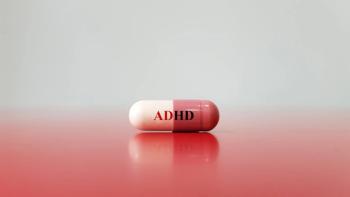
Cardiovascular System Takes Multiple Hits from Traffic-Related Air Pollution
TAIPEI, Taiwan -- Urban air pollution affects cardiovascular health from a number of angles at once, even in healthy young people, researchers here found.
TAIPEI, Taiwan, Aug. 15 -- Urban air pollution affects cardiovascular health from a number of angles at once, even in healthy young people, researchers here found.
Air pollution -- particularly levels of traffic-related sulfate and ozone -- were significantly associated with simultaneous measures of inflammation, oxidative stress, blood coagulation and autonomic dysfunction in college students, reported Chang-Chuan Chan, Sc.D., of National Taiwan University, and colleagues, in the second August issue of the American Journal of Respiratory and Critical Care Medicine.
These mechanisms had been linked to air pollution individually in previous studies but not together, they said. Furthermore, most previous studies have focused on older adults.
In an accompanying editorial, Joel D. Kaufman, M.D., M.P.H., of the University of Washington in Seattle, cautioned that the findings do not help determine the exact timing of cardiovascular effects.
But, the study does contribute some insight into how relatively low concentrations of pollutants cause this effect and what should be done about it, Dr. Kaufman added.
"While understanding the precise mechanism is not necessary to reducing overall pollution levels and gaining public benefit," he wrote, "understanding the pathways involved will permit the most targeted means of reducing pollution-related health consequences."
The researchers studied 76 healthy, nonsmoking students ages 18 to 25 who were living in a dormitory of the Fu-Jen Catholic University in Taipei.
The participants gave blood samples and underwent electrocardiographic monitoring of heart rate variability once a month for three months.
Each student's data was matched to air pollution and weather data averaged over the preceding one to three days.
Air pollution levels were relatively high during the study period, the researchers said. But, "they had the benefit of fairly large daily fluctuations in exposure, presumably dictated by meteorological conditions," Dr. Kaufman noted.
The individual pollutants measured did not consistently affect the cardiovascular risk factors, but an overall pattern of elevated risk did appear.
All findings were expressed as the effect from pollutant levels increasing from the 25th percentile to the 75th percentile, the interquartile range.
For the inflammatory marker high-sensitivity C-reactive protein, these findings were:
- 109.6% to 135.8% increase with rise in 10-m diameter or smaller particulate matter levels (P<0.05).
- 71.1% to 87.1% increase for rise in sulfate levels (P<0.05).
- 120.1% and 110.0% increase for rise in ozone levels (P<0.05).
The oxidative stress marker 8-hydroxy-2-deoxyguanosine increased 9.0% to 15.1% for a rise in nitrate levels, 1.0% for a change in sulfate levels, and 2.2% for a similar rise in ozone levels (all P<0.05).
The fibrinolytic factor tissue plasminogen activator was not associated with any air pollution measures, but the other fibrinolytic factor the researchers looked at was.
Plasminogen activator inhibitor-1 rose 19.1% to 30.0% with rising 10-m diameter or smaller particulate matter levels, 16.2% to 20.4% with 2.5-m diameter or smaller particulate matter, 11.6% to 16.9% with nitrate levels, 11.2% to 13.3% with sulfate levels, and 19.7% to 33.0% with ozone levels (all P<0.05).
The coagulation factor fibrinogen increased 5.3% with rising 10-m diameter or smaller particulate matter levels, 2.2% to 2.9% with sulfate levels, and 4.8% to 8.8% with ozone levels (all P<0.05).
For the heart rate variability measures, the standard deviation of the normal-to-normal beat interval was significantly slower with higher levels of sulfate, both 2.5-m and 10-m diameter or smaller particulate matter levels, nitrate, and ozone (all P<0.05).
Low frequency heart rate variability was likewise significantly negatively associated with sulfate, both 2.5-m and 10-m diameter or smaller particulate matter levels, nitrate, and ozone. High frequency heart rate variability was negatively associated with nitrate, sulfate, and ozone (all P<0.05).
Mixed-effects models showed sulfate and ozone more consistently associated with blood markers and heart rate variability than the other air pollutants, the researchers said.
In Taipei, studies have shown secondary sulfate is predominantly formed from tailpipe emissions of diesel cars and trucks. Ozone is also a major secondary pollutant formed from automobile emissions, Dr. Chan and colleagues wrote.
Therefore, the findings "imply that risk-based air pollution control policies should focus not only on emissions of primary pollutants but also on secondary aerosol precursors to maximize the benefits of health risk reduction," they wrote.
The study was limited, though, by use of general environmental data rather than participants' personal exposures. Thus, "the reported slopes only indicate the association between air pollution and the biological outcome rather than the degree of change in the outcome due to direct exposure to the pollutant," the authors wrote.
Also the heart rate monitoring and blood samples were collected at brief office visits, so the study could not examine the time sequence of the effects of exposure to urban air pollution.
"Many questions remain to be answered," Dr. Kaufman concluded, but added, "these questions should by no means slow the important efforts to reduce exposures and benefit global public health."
Newsletter
Enhance your clinical practice with the Patient Care newsletter, offering the latest evidence-based guidelines, diagnostic insights, and treatment strategies for primary care physicians.

































































































































































































































































































